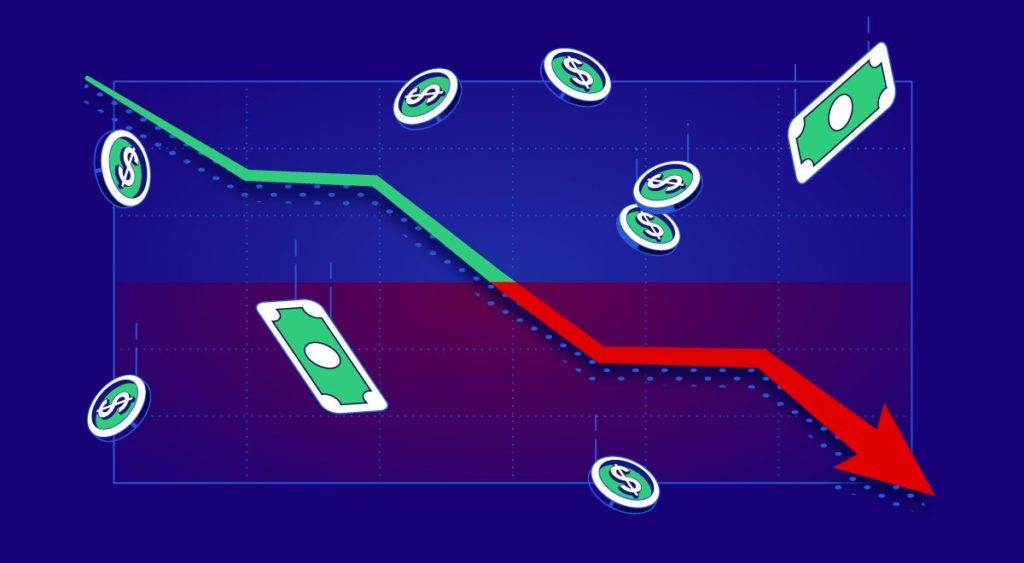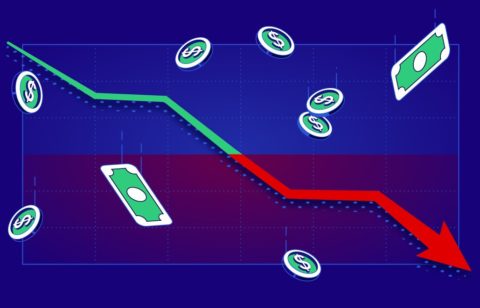Overdraft fees are no joke. The Federal Deposit Insurance Corporation (FDIC) released data regarding overdraft fee revenue and the overdraft practices of the 10 largest banks in the United States. According to this data, banks collected $11.45 billion in overdraft and non-sufficient funds (NSF) fees from American consumers in 2017.
With so many people searching, “What do I do when my bank account is negative?”, it’s clearly a growing problem. Here are steps to take when your bank account is in the red.
Stop Using Your Account
Stop using your checking account immediately when you notice your bank account is negative. Once your account is in the negative, fees from non-sufficient funds transactions only add to your growing debt. If you can, freeze your account to stop automatic payments and subscriptions from going through.
If you opt out of overdraft protection, transactions will be declined; however, if you’ve written a check and it bounces, your bank might charge a non-sufficient funds fee when your bank account is negative. Debit card transactions cause more overdraft fees than any other type of transaction, so opting out of overdraft protection might be an option worth considering.
Get Your Account Out of the Red
To avoid snowballing debt when your bank account is negative, the next step is to get money into your account as quickly as possible.
Transfer Money from a Savings Account
If you have a savings account with enough money to cover the negative in your checking account, then transfer funds immediately.
Turn in Loose Change
Loose change around the house adds up quickly, and it might be more than you think. Take your coins to the bank, roll them yourself, or find a coin-counting machine at a grocery store or bank.
Ask for a Salary Advance from Work
There’s no harm in asking your employer for a salary advance when your bank account is negative. A salary advance is a full or partial payment of a future paycheck. The policy for a salary advance varies by company. Before asking your employer, research company policy.
Sell Something
You might have unused items around the house that you can sell to help cover your balance when your bank account is negative. Consider selling unused items online on eBay, Facebook Marketplace, or via a yard sale.
Pick up a Side Gig
The side gig industry is booming. Try food delivery, writing or editing, customer service, teaching, or managing social media accounts. Side gigs are a great option to bring in some extra cash if you’re in a difficult financial situation.
Borrow Money from Family or Friends
Family and friends might be willing to help you if you’re in a tough financial situation. This should be one of your last options though. Use this to get your account back in the green and then pay it back as soon as possible.
Ask for Fee Forgiveness
Many people are unaware that they can negotiate fees with their bank. Considering most banks charge $34 and upward per overdraft transaction, there’s no harm in contacting a customer service representative and requesting your fee be waived. Call or make a visit to your branch and explain your situation, apologize, and ask if it’s possible to waive any fees. You’ll have more success if you’ve been a loyal customer in good standing.
Take Action to Prevent Overdrafts
After you’ve taken action against your negative bank account balance, you need to make sure this doesn’t become a recurring offense. Banks can close your account if you’re in the negative for too long, or if it happens too often. Once the account is closed, the debt is still there. The bank will report your debt and the reasoning behind closing your account to a financial reporting service. Other banks can look at these reports and choose not to do business with you.
Develop a personal budget and start building an emergency fund to use when you’re in a difficult financial spot. Make it a habit to check your account regularly. It’s easier now more than ever to check your balance whenever you wish. Put your bank’s mobile app on your phone and have it notify you once your balance drops below a certain amount. Noticing your bank account is negative is a stressful situation, but taking the right steps and proper precautions can help you avoid this in the future.





